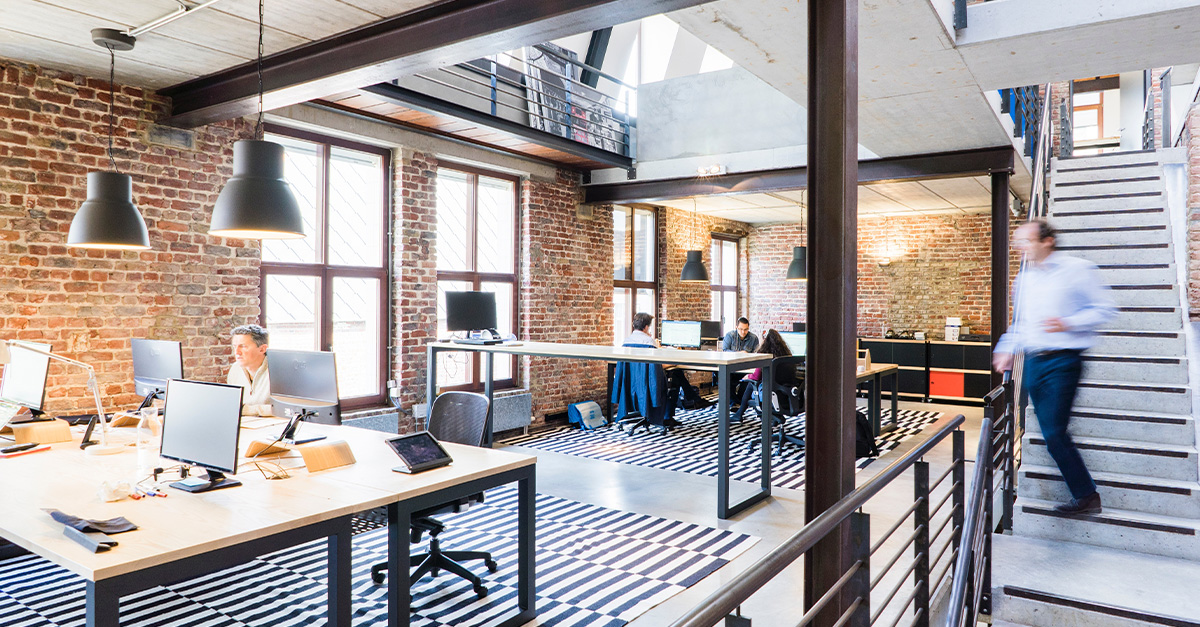8 min read
Making Sense of Enterprise Application Modernization
In today's evolving digital landscape, enterprises must remain competitive by adapting to new technologies and trends. One approach to staying...
Application modernization is essential in today's rapidly evolving technological landscape. As businesses strive to keep up with the latest advancements, enhance security and compliance, and increase efficiency and agility, the need to modernize their applications becomes paramount.
To support your organization in its digital transformation efforts, let's explore the importance of application modernization, various approaches to modernization, and important factors to consider.
As technology continues to evolve rapidly, businesses are constantly seeking ways to keep up with the latest advancements and stay ahead of the competition. One important aspect of this process is application modernization.
Application modernization refers to the process of upgrading or transforming existing legacy applications to leverage new technologies and meet current business needs. Modernizing applications allows organizations to optimize their operations, enhance security and compliance, and increase efficiency and agility.
One of the primary reasons why application modernization is so important is to keep up with technological advancements. Legacy applications are often built on outdated frameworks and technologies, making it challenging to integrate modern functionality and meet the expectations of today's users.
By modernizing their existing apps, businesses can leverage the power of new technologies such as machine learning and artificial intelligence. These advancements can significantly enhance the capabilities of applications, enabling organizations to deliver more personalized experiences, automate processes, and make data-driven decisions.
Another crucial benefit of application modernization is the ability to enhance security and compliance measures. Legacy applications often lack sufficient security features, making them vulnerable to cyber threats and data breaches.
Modernizing apps allows organizations to incorporate robust security measures, such as encryption, authentication, and access controls, to protect sensitive data. Additionally, modernization helps organizations comply with industry standards and regulations, ensuring that they meet the necessary security and privacy requirements.
In today's fast-paced business environment, operational efficiency and agility are paramount to success. Legacy applications can be cumbersome and slow, hindering productivity and inhibiting business growth.
Through application modernization, businesses can streamline their processes and optimize performance. By leveraging cloud-native architectures and fully managed services, organizations can operate their applications more efficiently and cost-effectively. This allows them to adapt quickly to changing market demands, scale resources as needed, and improve overall agility.
There are several viable approaches to application modernization employed by today's business organizations. Let's take a closer look at a few.
Replatforming refers to the process of moving existing applications to a new platform with minimal changes to the underlying codebase. This approach allows organizations to take advantage of modern infrastructure without rewriting the entire application. For example, you can modernize a legacy application by migrating it from an on-premises server to a cloud-based platform, such as AWS or Microsoft Azure.
Replatforming offers several benefits, including improved scalability, increased reliability, and reduced maintenance costs. By leveraging the power of the cloud, you can scale resources based on demand, ensuring optimal performance and cost-efficiency.
Refactoring involves making small, incremental changes to the existing application's codebase to improve its functionality, maintainability, and performance. This process typically involves rewriting specific modules or components of the application while preserving its overall functionality.
For example, you may choose to extract certain functionalities into separate microservices, enabling independent scaling and deployment. Refactoring also involves optimizing code, removing technical debt, and improving code structure to enhance maintainability and facilitate future enhancements.
Rearchitecting, also known as redesigning, is a more extensive approach to application modernization. It involves reimagining the application's architecture to better align with modern best practices and technologies. This may require a complete overhaul of the application, including modifying its data storage, modularizing components, or adopting a new architectural pattern.
In the process of rearchitecting, it's crucial to consider the potential impact on the application's functionality, performance, and security. However, the benefits can be significant, such as improved scalability, better integration capabilities, and increased speed to market.
The most comprehensive approach to application modernization is rebuilding. Rebuilding involves rewriting the entire application from scratch, often using modern development frameworks and technologies. While this approach requires a significant investment of time and resources, it is often necessary when the existing application's code base is too outdated or lacks the flexibility to meet the organization's current needs.
Rebuilding provides an opportunity to leverage the latest development tools and practices, creating a more agile, scalable, and maintainable application. However, organizations must carefully plan and manage the rebuilding process to minimize potential disruption and ensure a smooth transition.
Whether you run enterprise apps or operate cloud-native apps, modernization can help you improve efficiency, enhance scalability, and reduce technological strain. Here are some factors to keep in mind when modernizing applications for your organization.
Before embarking on any application modernization initiative, be sure to clearly define your modernization goals and ensure they align with your overall business objectives. This alignment will help you prioritize and focus on the applications that can deliver the most significant impact.
For example, if your business objective is to increase customer satisfaction by improving response times, modernizing your customer-facing applications to leverage machine learning algorithms can help automate and expedite certain processes. This, in turn, can enhance the overall customer experience and drive customer loyalty.
Understanding your existing infrastructure and identifying dependencies is crucial when planning your application modernization strategy. Consider the various components and systems that your applications rely on, such as databases, third-party software, and integration points.
Modernizing your applications without considering these dependencies can lead to interoperability issues. It's important to leverage assessment tools to gauge how your existing infrastructure will support the modernized applications and evaluate the impact of any changes on the overall system.
For instance, if your legacy application heavily relies on a specific database system, migrating to a cloud-native architecture may require integrating with a different database technology. Ensuring a smooth transition to the new infrastructure should be a key consideration.
Another crucial factor to consider when modernizing applications is the cost and resource allocation involved in the process. A comprehensive assessment of the costs, both in terms of finances and human resources, should be analyzed before initiating any modernization efforts.
Consider the costs associated with acquiring modernization services, tools, and technologies, as well as training your team on new platforms and frameworks. Before committing to app modernization, be sure to evaluate the return on investment (ROI) and determine if the benefits outweigh the costs.
Additionally, resource allocation is crucial for successful application modernization. Properly allocating skilled personnel will ensure a smooth transition and reduce any potential bottlenecks and delays in the modernization process.
Ensuring that your modernization strategy addresses these three key factors will significantly increase the chances of success and help you achieve your desired outcomes.
However, it's important to note that each organization's modernization journey will be unique, and there is no one-size-fits-all approach. Application modernization is not a one-time event but an ongoing process. Continuously monitoring and reassessing your modernized applications will help you adapt to evolving business needs and technology advancements.
Successfully modernizing applications requires a thoughtful approach and adherence to best practices. Here are some key steps to guide organizations on their path to application modernization success:
By following these steps and adopting a well-defined modernization approach, organizations can successfully modernize their applications and reap the benefits of cost savings, improved agility, enhanced user experiences, and increased competitiveness in their respective industries.
If you're interested in app modernization for your business, trust Promevo. At Promevo, we help you harness the robust capabilities of Google to accelerate the growth of your company and give you the momentum you need to achieve your most ambitious business goals. With our expert consultation, comprehensive support, and exceptional service from end-to-end, you can drive maximum collaboration and productivity in your organization.
Application modernization refers to the process of updating or transforming existing legacy systems, applications, or software to make them more compatible with newer technologies and functionalities. This involves revamping outdated or obsolete codes and infrastructure to improve performance, scalability, security, and user experience.
The goal of application modernization is to extend the lifespan and relevance of existing applications by incorporating modern software architecture, cloud-based solutions, microservices, containerization, or other emerging technologies, while preserving core functionalities and data.
The modernization process often involves assessing the current state of the application, identifying areas for improvement, and implementing modernization strategies accordingly.
An example of application modernization is the transition from a legacy, monolithic application to a more modern, cloud-based microservices architecture.
In this scenario, the traditional application is broken down into smaller, decoupled services that can be deployed and scaled independently. This approach improves agility, scalability, and resilience of the application, allowing for faster development cycles and easier adoption of new technologies.
Additionally, modernizing an application in this way often involves utilizing DevOps practices and leveraging cloud infrastructure, providing additional benefits such as cost savings and improved performance.
Digital transformation refers to the overall process of utilizing digital technologies to fundamentally change how a business operates and delivers value to its customers. It encompasses a broad range of activities, including updating business models, processes, and systems to leverage digital tools and technologies.
On the other hand, application modernization is a more specific, focused effort to update and enhance existing applications in order to improve their functionality, user experience, and performance. Application modernization can be a part of a larger digital transformation initiative, where the goal is to modernize and optimize specific software applications to align with the business's digital strategy.
Meet the Author
Promevo is a Google Premier Partner for Google Workspace, Google Cloud, and Google Chrome, specializing in helping businesses harness the power of Google and the opportunities of AI. From technical support and implementation to expert consulting and custom solutions like gPanel, we empower organizations to optimize operations and accelerate growth in the AI era.

8 min read
In today's evolving digital landscape, enterprises must remain competitive by adapting to new technologies and trends. One approach to staying...

5 min read
If you use Google Cloud to store and manage data, it’s important to adopt Google’s pioneering approaches to enterprise security through tools,...

6 min read
Application modernization services are essential for businesses that seek to improve efficiency, reduce costs, and enhance their competitiveness in...